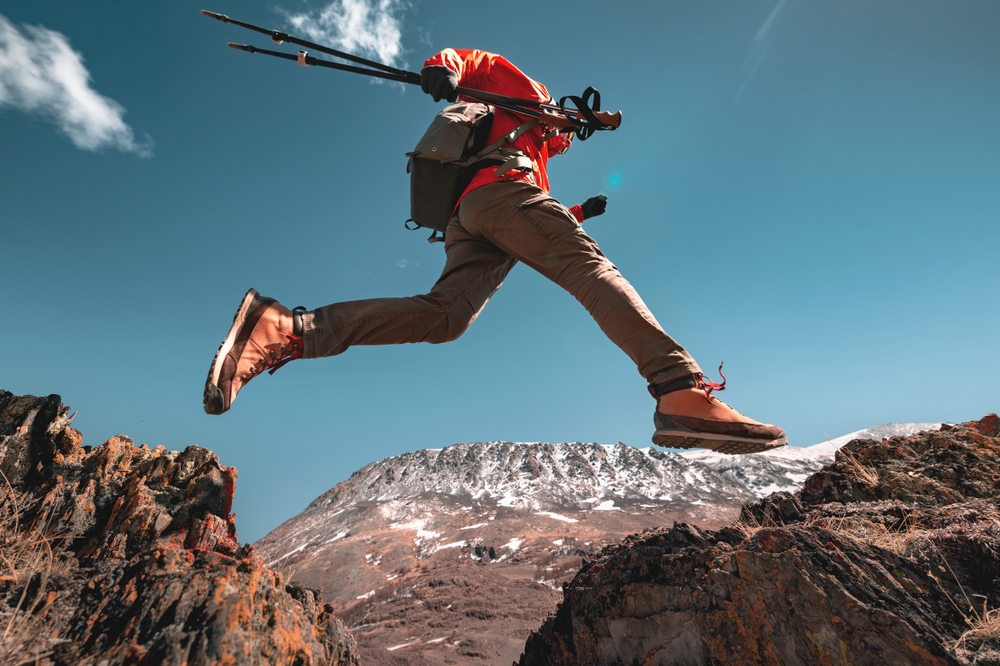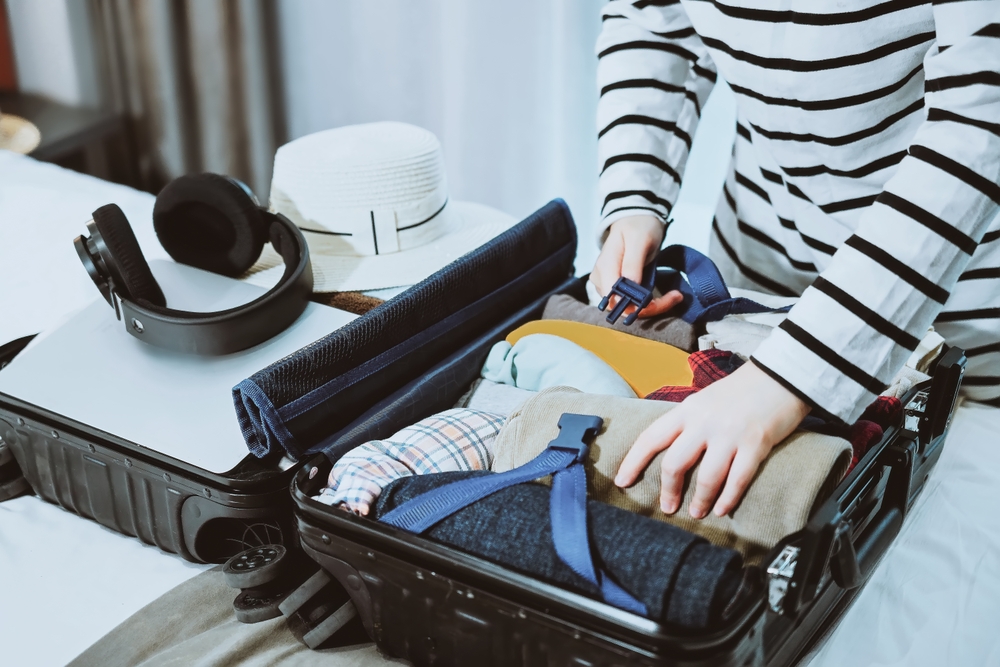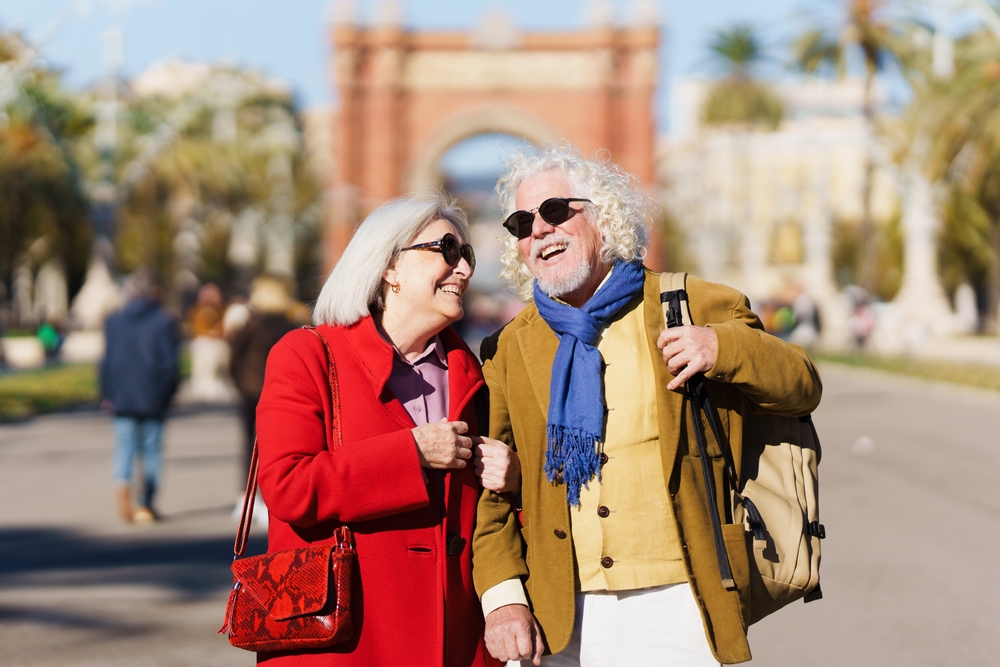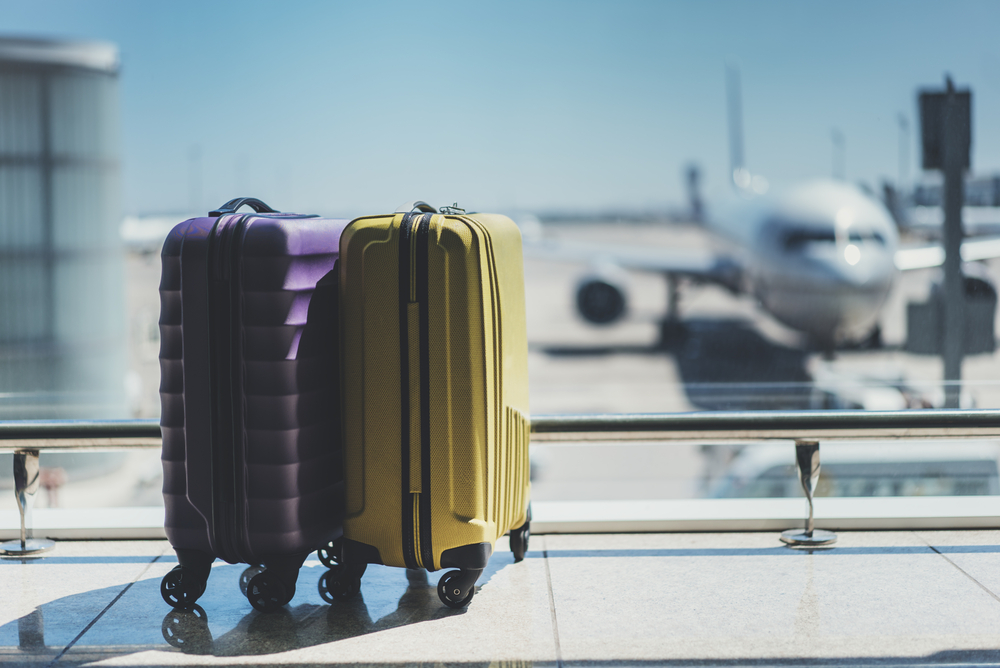Staying in shape while travelling can be a challenge, but it’s entirely possible with the right workout plan and healthy food. By keeping up your training (whether that’s bodyweight circuit training or simple stretching exercises in your hotel room) and making mindful dietary choices, you’ll keep your energy levels high and your health on track while living out of a suitcase. We hear from U.P. Fitness on the best exercises to do while traveling, along with health tips from TSquared Lab.
A workout plan to help you beat jetlag
“Whether you’re travelling for business or pleasure, it’s imperative to maintain your exercises and training schedule,” says RAYMOND KIANG, general manager of Ultimate Performance (U.P.) Singapore. “The only time a break would be worthwhile is if you’ve been going hard with your training and diet for a long time, you’re on vacation, and you simply want a mental break from it all.”
Staying active and doing your exercises and training while travelling not only helps you stay in shape but also mitigates the jet lag that accompanies long-haul flights, speeding up the return to normal circadian rhythms (our internal body clock).
Raymond recommends either training first thing in the morning or as soon as you land. “If you land late at night, set your alarm at your normal wake up time the next day and do your exercises. Otherwise, eliminate the nauseating fatigue that long flights can create by getting sweaty as soon as you’re checked in. In professional wrestling, where the travelling schedule often requires wrestlers to travel to three or four different cities every week, one of their secrets to staying fresh and focused is to do some form of exercise when they land from a flight,” he says.
According to Raymond, the number one piece of advice is to do something every day, or as often as you can. “Even if it’s only for 10 to 20 minutes, stimulating your metabolism and muscle tissue is vital for maintaining progress. Focus on at least maintaining what you’ve achieved; anything gained is a bonus,” he says.
Replicating your home training in hotel gyms may be tricky, so opt for time-efficient High-Intensity Interval Training (HIIT) exercises. “Deadmills” on the treadmill – going hard for 10 to 20 seconds and then resting or slowing down for 40 to 50 seconds – are another great option for your workout plan, and it’s worthwhile packing resistance bands for a few sets of upright rows or jumping jacks.
Circuit exercises you can do in your hotel room!
Looking for a small-space workout plan with circuit exercises that you can do while traveling? These bodyweight workout from the team at U.P. can easily be done in your hotel room. Perform two to five rounds, with no rest between exercises. Rest 60 seconds between circuit exercises.
Full-body circuit training workout 1
#1 “Squeeze” press-ups (10-15 reps): Make regular push-ups harder by squeezing your hands against the floor as you go up and down.
#2 Back foot elevated split squat (10 to 15 reps): Go down all the way, come up halfway, go down again, then come all the way up. That’s one rep of this circuit exercise.
#3 “YTWL” shoulder workout (10-15 seconds each direction): Named after the shapes formed by the arms during each of these circuit exercises. Keep your scapulae back and down during each circuit training move.
#4 One-legged hip thrust (10 to 15 reps). These are some of the best exercises to do while traveling!
Full-body circuit training workout 2
#1 Plank to press-up (5 to 10 reps).
#2 Reverse lunges (10 to 15 reps).
#3 Mountain climbers (8 to 10 reps).
#4 Super slow squats (10 reps): Squat up and down, five seconds each way for these circuit exercises.
Advice on choosing healthy food while travelling
So now you know the best exercises to do while traveling, how do you stick to a balanced diet? Especially in the face of tempting street food stalls and unfamiliar restaurant menus? Good question! With some planning and effective exercises, however, it’s possible to enjoy your time away without deviating from your fitness goals. DARREN GOH, senior trainer at bespoke personal training gym TSquared Lab, shares some advice on choosing healthy food while on the road.
#1 Research and plan ahead. Before you even step foot on the plane, arm yourself with knowledge about the local cuisine and dining options at your destination. Look for restaurants that offer healthy choices or cater to dietary restrictions. Websites and apps like Yelp, Tripadvisor and HappyCow can be invaluable resources for finding nutritious eateries near your meetings or hotel.
#2 Pack healthy food and snacks. Long flights and meetings often mean limited food options. So pack a selection of nutritious snacks to keep hunger at bay. Opt for portable, non-perishable items like protein bars, rice cakes and plain crackers. “These snacks will not only provide energy but also prevent you from succumbing to unhealthy temptations,” says Darren from TSquared Lab.
#3 Stay hydrated. Dehydration can exacerbate jet lag and fatigue, so be sure to drink plenty of water throughout your journey. Carry a reusable water bottle and refill it regularly, especially in hot climates, at high altitudes and while doing your exercises. Limit your intake of sugary drinks and alcohol, as they can dehydrate you further.
#4 Choose wisely at restaurants. Scan the menu for dishes that are rich in lean proteins, whole grains, fruits, and vegetables. “Wherever possible, choose grilled, steamed or baked items instead of fried or saucy foods,” says Darren from TSquared Lab.
#5 Portion control. While it’s tempting to indulge in oversized portions, especially when faced with delicious local delicacies, practice moderation. Share meals with colleagues or ask for half-portions to avoid overeating.
#6 Embrace local produce. One of the joys of travelling is sampling fresh and exotic seasonal produce that you may not find at home. Visit local markets or grocery stores to stock up on healthy snacks.
#7 Listen to your body. If you’re feeling fatigued or sluggish, prioritise nutritious meals and snacks and honour your cravings in moderation. “Pay attention to how different foods make you feel, and adjust your choices accordingly to maintain energy levels and overall wellbeing,” says Darren from TSquared Lab.



